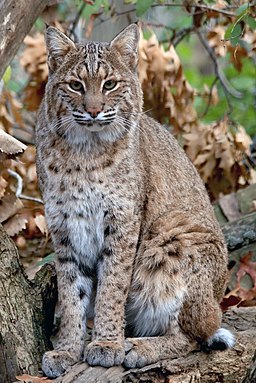Bobcat
Lynx rufus
Written by Kathy Richards
HABITAT:
BEHAVIOR:
Bobcats tend to be solitary and nocturnal. They are typically very quiet but will make deep growls, hissing or spitting sounds. In the winter they tend to be more activce during the day and are regularly seen in exposed sunny spots on slopes that are protected from the wind. To establish territory they use scent posts and travel along established routes. They are excellent swimmers but prefer not to and will avoid crossing bodies of water.
During an evening of hunting and patrolling territory a bobcat can easily travel 2-7 miles. The bobcat hunts by patiently hiding in thickets and other secluded place waiting for prey. bobcats are also excellent climbers so will also wait in trees.
FOOD:
Bobcats are omnivores and will regularly hunt snowshoe hare and cottontail rabbits. They will also eat squirrel, muskrat, small mammals, birds and their eggs, In the winter an important part of their diet is deer. Other food includes snakes, fish, crustaceans, insects and some plants.
Bobcats will also eat domesticated animals such as chickens but also pets.
PREDATOR:
Check out other animals in the exhibits nearby

Gray Fox

Fisher

Long Tailed Weasel

